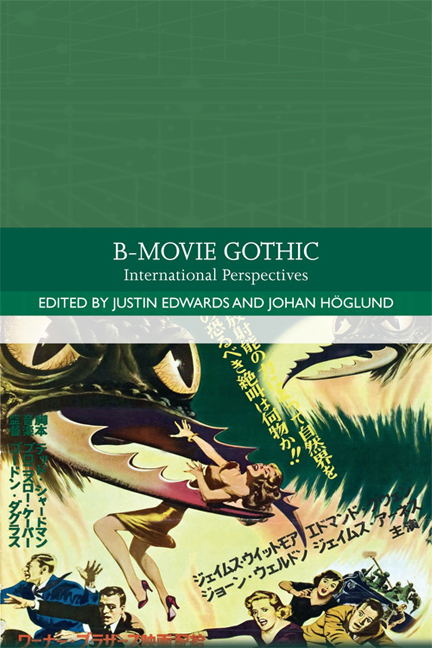13 - B is for Bhayanak: Past, Present and Pulp in Bollywood Gothic
Published online by Cambridge University Press: 06 May 2021
Summary
In terms of both turnover and global reception, ‘Bollywood’ cinema is dominated – as is the production of films not just in Bombay but also in other film hubs of India – by what Indians call ‘masala’ (spicy) films. This broadly translates into ‘commercial cinema’ in Western terms – though India also has a rich tradition of ‘parallel (art) cinema’ and ‘middle cinema’, both of which get obscured by masala films nationally and, increasingly, internationally. But within this predominance of masala films there lurks a double mystery: the term ‘gothic’ is seldom employed in Indian film criticism, and ‘horror films’ (a term far more freely employed) have never really caught on in India, except, for a while and solidly as B-films, in the 1970s and 1980s. Both terms – ‘gothic’ and ‘horror’, as explicated later in this chapter – are haunted by cultural differences when applied to Indian film or literature: they can be said to exist, ambivalently and inevitably, but at a tangent from their European versions.
The double mystery of the ghostly in/existence of both ‘gothic’ and ‘horror’ in Indian cinema needs to be examined in this light. It is by looking at this mystery that this chapter will explore how B-movie Gothic interrogates the histories and regions of ‘India’. In short, I will argue that both the absence of a long tradition of horror qua horror and the fact that Indian films which will not be called ‘horror films’ in the West are called ‘horror films’ by astute scholars of Indian cinema point to the same thing: what is often called ‘horror’ cinema in India is closer to Gothic film, and, as is the case with major Gothic periods in Europe, the heydays of horror B-films tend to mark a passage of stylistic and political transition.
However, as noted, the term ‘gothic’ is seldom applied as a generic definition of Indian films, largely because of its European provenance and the apparent ease with which the past and present permeate each other even in ‘non-gothic’ India. When it is applied to Indian films, ‘gothic’ tends to be used simultaneously with ‘horror’: as in the title ‘Dark tales from Bollywood: Indian Gothic horror cinema and the nation's Others’ (Valanciunas 2015). While, as we shall see, there have been B-movie Indian adaptations of Western Gothic texts – most obviously Bram Stoker's Dracula – there has been no extensive use of the term ‘gothic’ in either Indian film criticism or Indian (as distinct from ‘postcolonial’) literary criticism.
- Type
- Chapter
- Information
- B-Movie GothicInternational Perspectives, pp. 209 - 220Publisher: Edinburgh University PressPrint publication year: 2018



